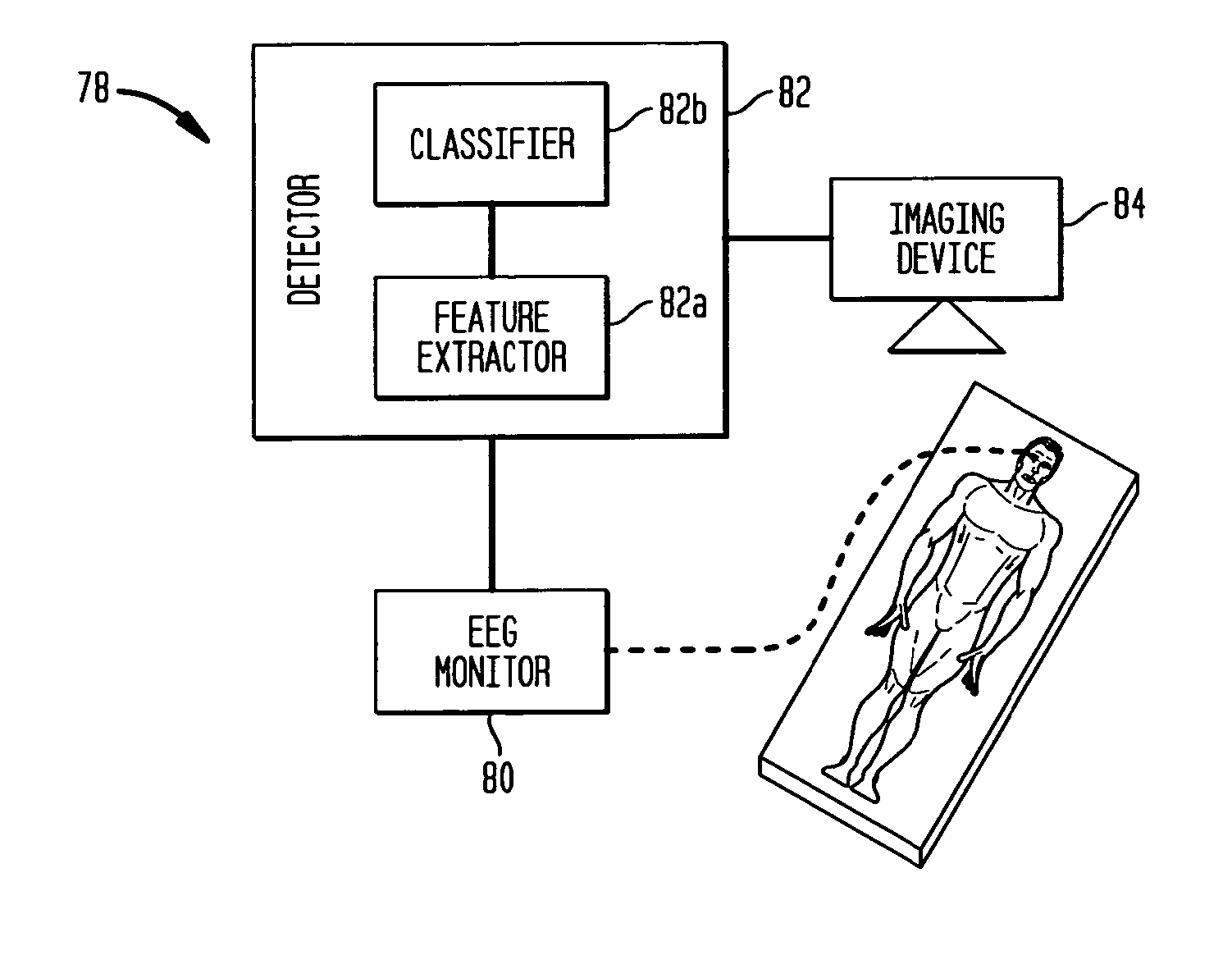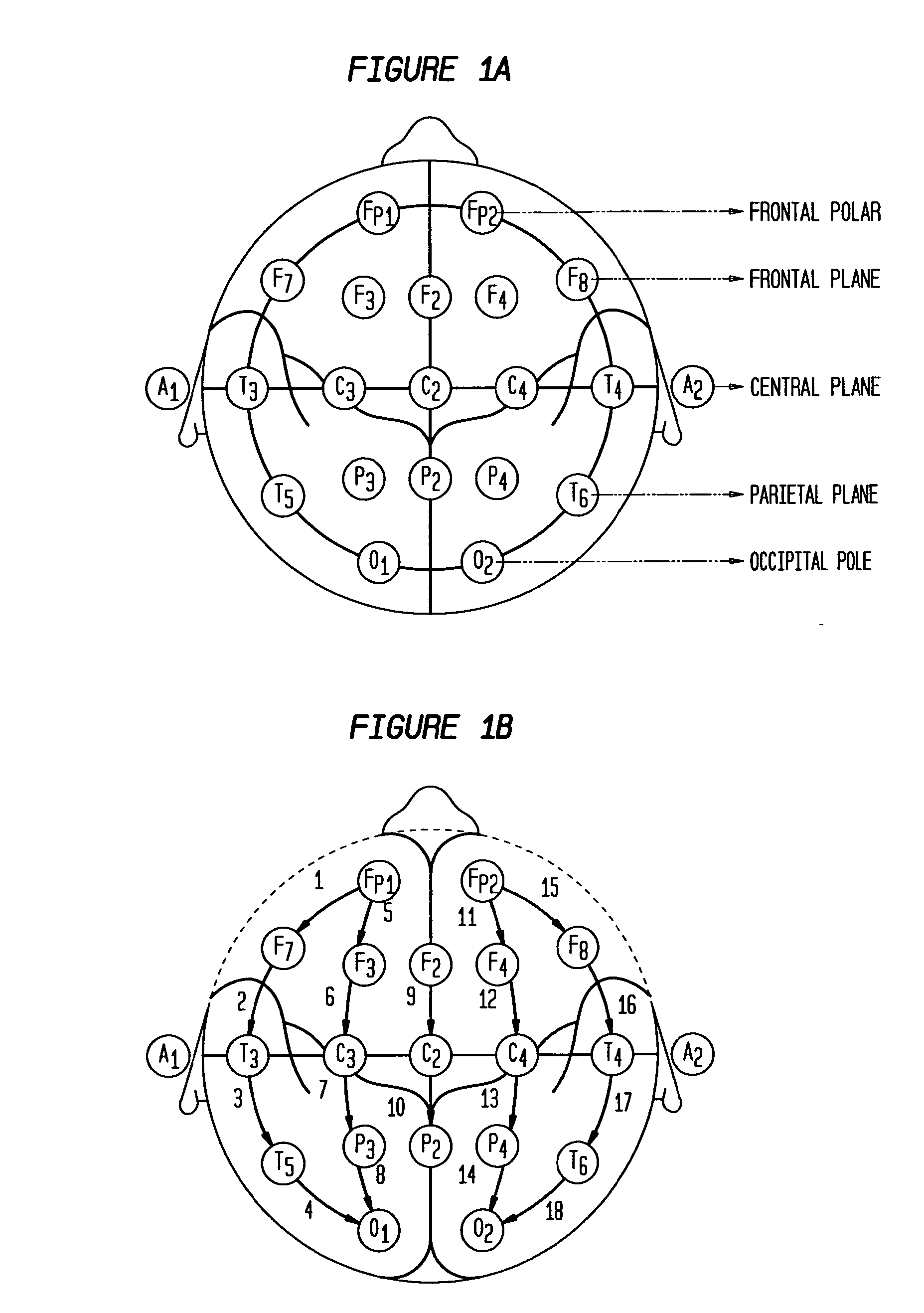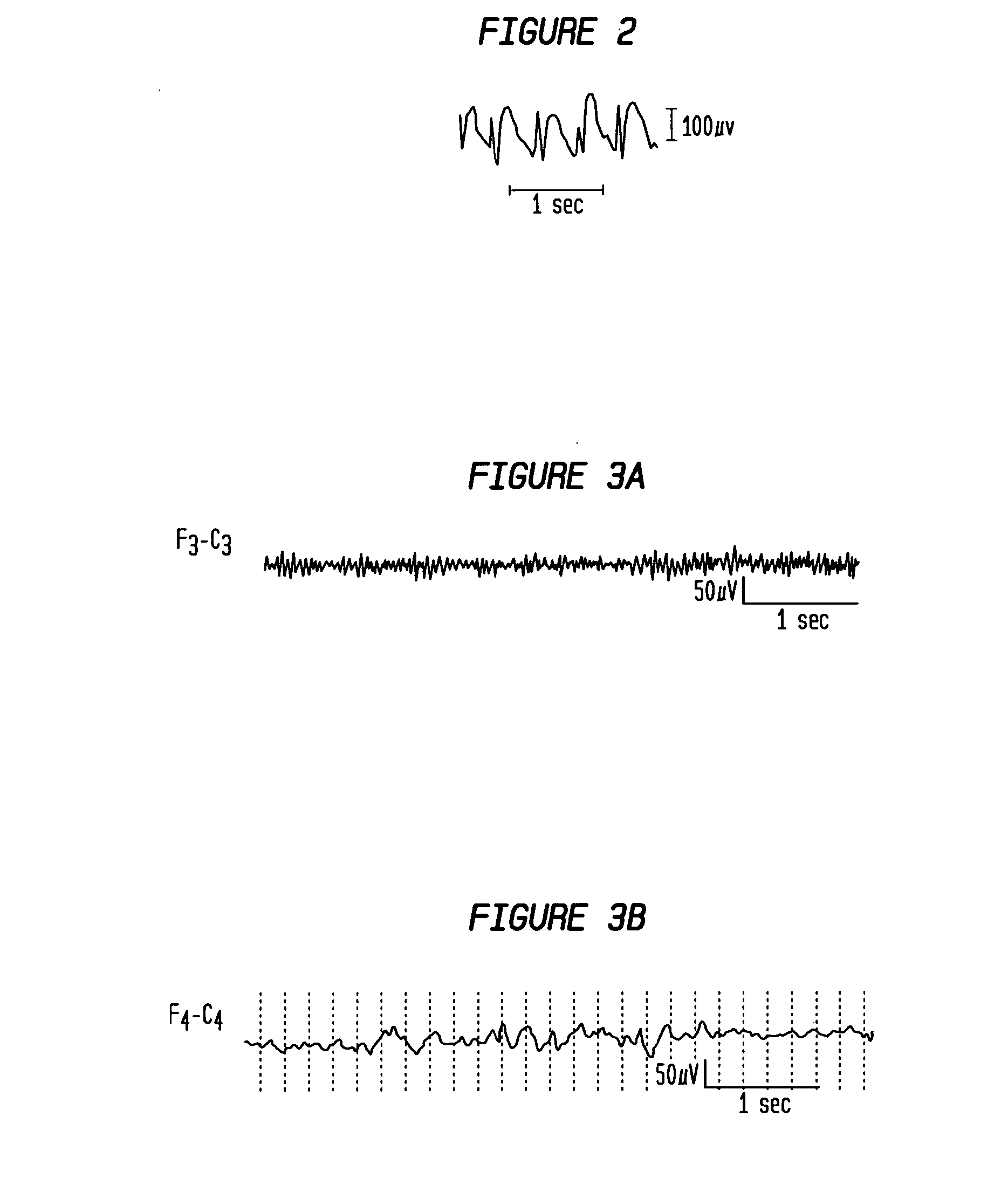Patient-Specific Seizure Onset Detection System
a detection system and patient technology, applied in the field of patient-specific seizure onset detection system, can solve the problems of severe injuries, burns and even deaths, and the optimal functioning of many such systems
- Summary
- Abstract
- Description
- Claims
- Application Information
AI Technical Summary
Benefits of technology
Problems solved by technology
Method used
Image
Examples
embodiment 21
where i corresponds to waveform channels (in this embodiment 21 channels are observed).
wj=∑k∈Gjakj=1,…,15Equation(10)
Training
[0269]In many embodiments of the invention, during training, the classifiers use a diverse set of examples from the seizure and non-seizure classes to determine decision boundaries. By way of example, in embodiments in which 21 derivations are employed, the training examples can be patient-specific, non-overlapping sets Si=1, . . . , 21, each containing selected epochs (e.g., two-second epochs) of labeled activity from a single EEG derivation. The epochs that correspond to seizure-related activity are labeled as examples of the seizure class, while those corresponding to both normal and artifact-contaminated activity from different states of consciousness are labeled as examples of the non-seizure class. It should be understood that training sets can be constructed in a similar manner in embodiments that utilize different number of derivations or employ refere...
PUM
 Login to View More
Login to View More Abstract
Description
Claims
Application Information
 Login to View More
Login to View More - R&D
- Intellectual Property
- Life Sciences
- Materials
- Tech Scout
- Unparalleled Data Quality
- Higher Quality Content
- 60% Fewer Hallucinations
Browse by: Latest US Patents, China's latest patents, Technical Efficacy Thesaurus, Application Domain, Technology Topic, Popular Technical Reports.
© 2025 PatSnap. All rights reserved.Legal|Privacy policy|Modern Slavery Act Transparency Statement|Sitemap|About US| Contact US: help@patsnap.com



